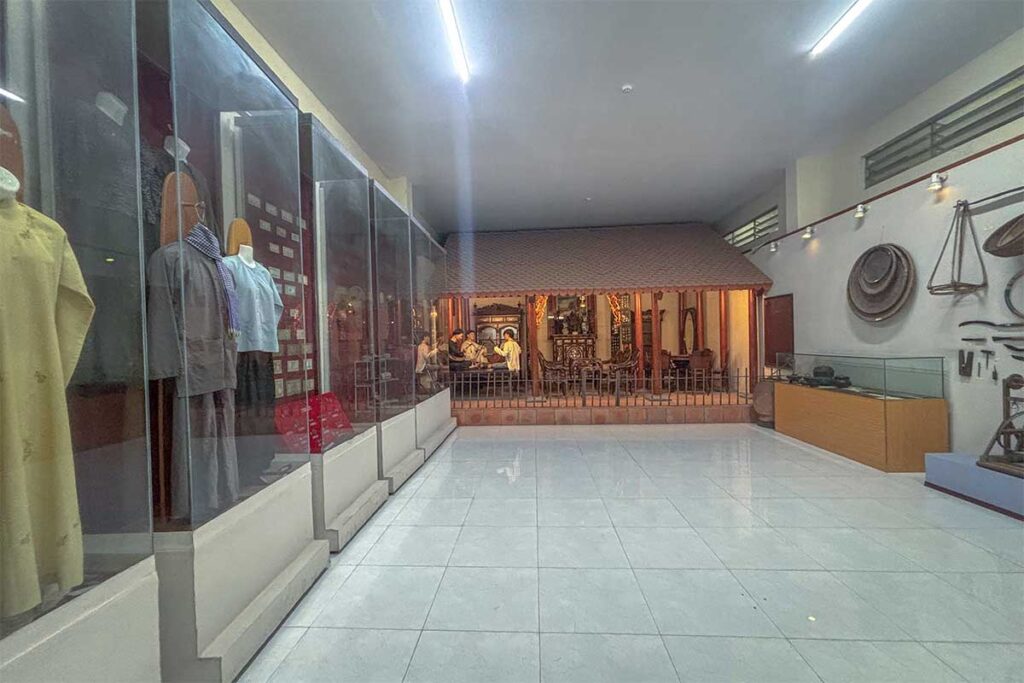What is Can Tho Museum about?
Can Tho Museum is a regional museum that aims to give visitors a broad picture of life in the Mekong Delta, both past and present. Covering 2,700 square meters, it’s the largest museum in the area, though the scale feels modest compared to museums in bigger Vietnamese cities.
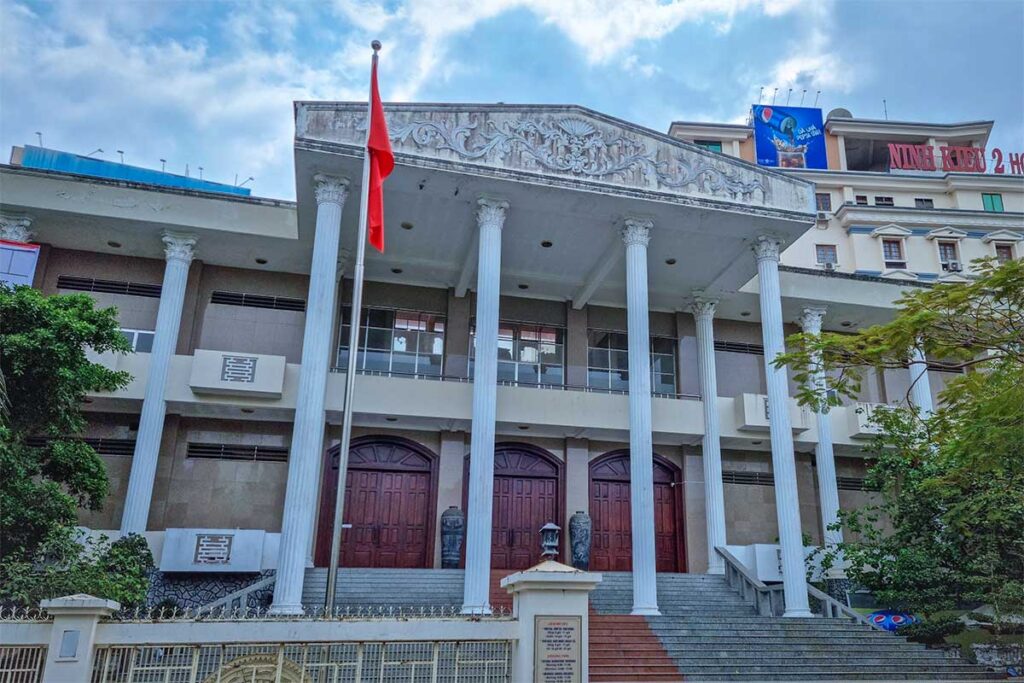
The exhibitions are split across different themes. You’ll find displays on the Kinh (Vietnamese), Hoa (Chinese), and Khmer communities, ancient Oc Eo culture with artifacts dating back more than a thousand years, and the city’s role in the resistance wars against the French and Americans. Other sections focus on Can Tho’s development after 1975, with exhibits on agriculture, industry, and modern society.
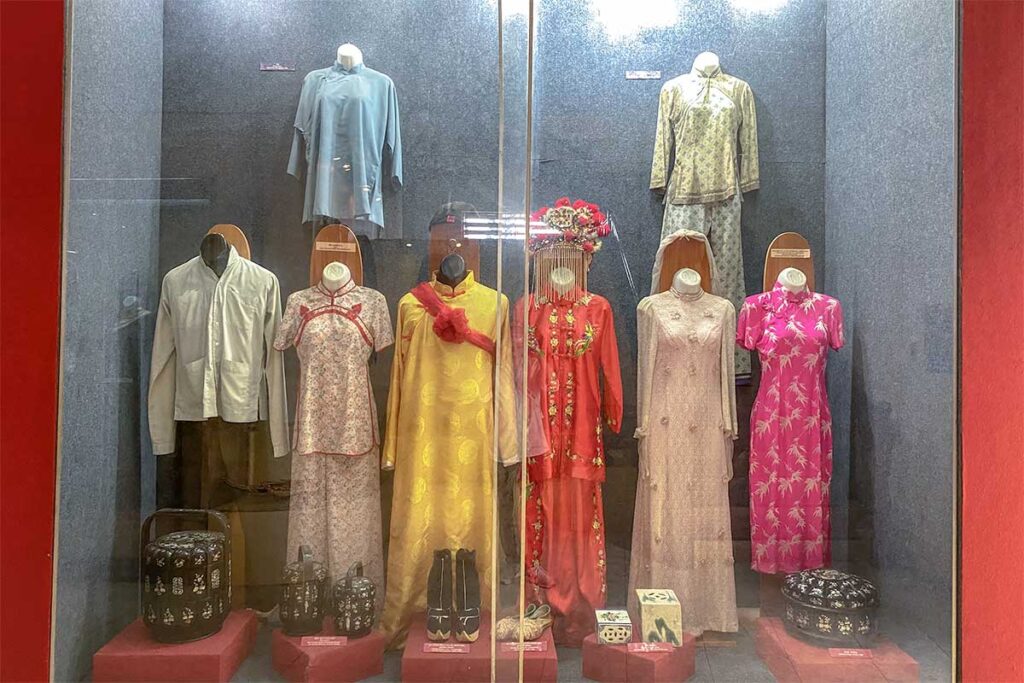
It’s not a museum that will blow you away, but it does provide a free and accessible way to understand the local background. The location right in the center of Can Tho makes it easy to stop by, especially if you’re already exploring nearby sights.
Practical visiting information & tips
Opening hours & entrance fee
Admission is free, which already makes it an easy stop if you’re nearby. Can Tho Museum has unusual opening times, so it’s best to check your schedule before heading there:
- Closed: Mondays and Fridays
- Tuesday – Thursday: 8:00–11:00 & 14:00–17:00
- Saturday – Sunday & holidays: 8:00–11:00 & 18:30–21:00
Location & how to get there
The museum sits right in central Can Tho at No. 1 Hoa Binh Avenue, only a short walk from Ninh Kieu Wharf. If you’re staying around the riverside area, you can easily reach it on foot. Otherwise, taxis and Grab cars are straightforward and inexpensive options, and local buses run along the main avenues.
Facilities
Facilities are fairly basic. There’s a small shaded courtyard with a café serving drinks, some space to park motorbikes, and a few benches to sit on. Tour groups can arrange a Vietnamese-speaking guide in advance, but casual visitors are usually left to walk around on their own. Don’t expect souvenir shops or modern interactive displays.
Rules & etiquette
The museum expects modest clothing (avoid shorts and sleeveless tops), though enforcement is not strict. Photography of exhibits is restricted—you’ll need permission if you want to take photos inside. Other rules are standard: no food or drink, no touching the displays, and keep noise down.
Language & signage
One of the main challenges for foreign visitors is the lack of English. Only a fraction of the exhibits have translations, and many explanations are Vietnamese-only. Google Translate’s camera function is very useful here, and QR codes link to the official website in some rooms. If you don’t mind a bit of extra effort, you can still get a good sense of what’s on display.
Highlights of Can Tho Museum
1. Outdoor displays and grounds
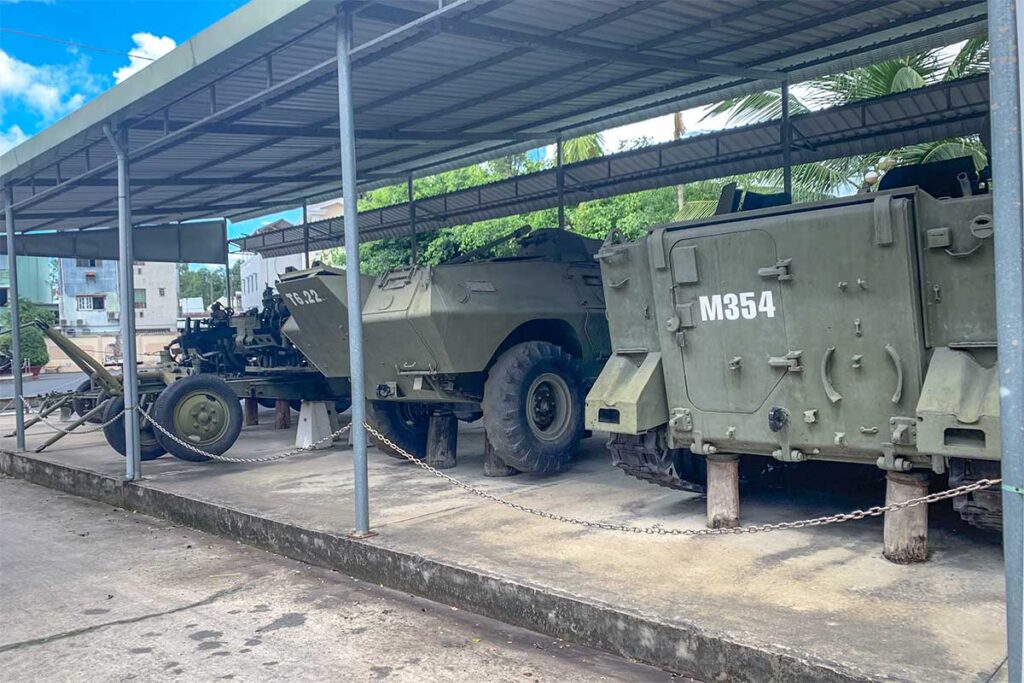
Outside the museum building, you’ll find several military vehicles and artillery pieces left from the war years. They’re displayed under a simple shelter, giving a sense of scale compared to the smaller indoor exhibits. The courtyard itself is shaded with a few benches and a small café that serves coffee and tea — a handy stop if you’re visiting during the heat of the day. While not extensive, the outdoor area adds some variety to the visit and is often the most photogenic part for casual visitors.
2. Solemn Hall
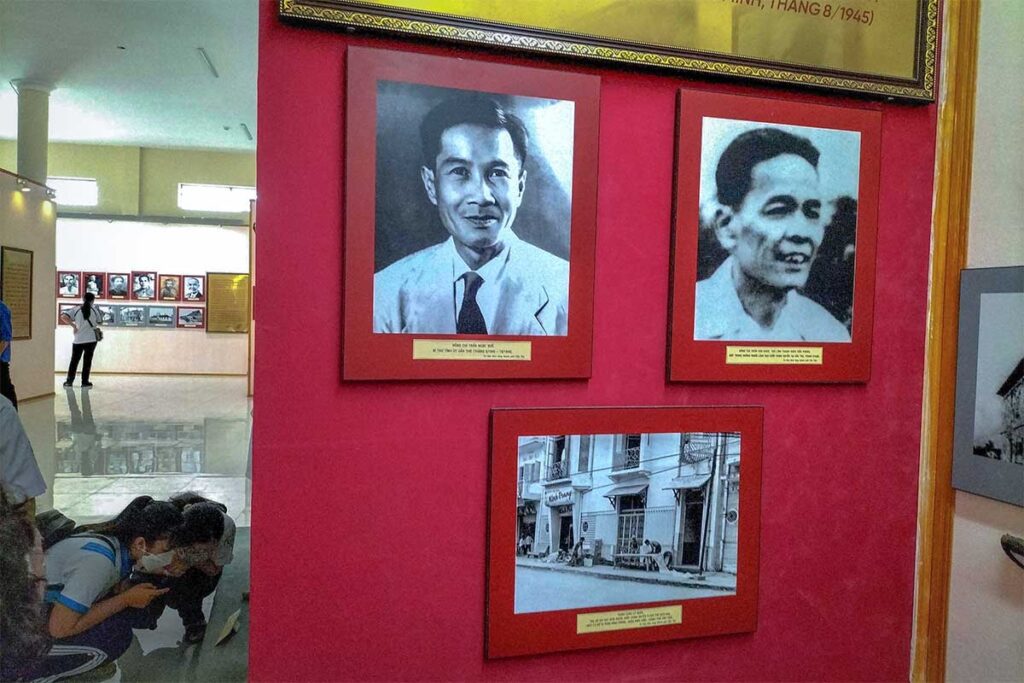
The first section you enter is dedicated to national and local heroes. Expect tributes to Ho Chi Minh, revolutionary leaders, and intellectual figures such as scholars and poets from Can Tho’s history. It feels more like a ceremonial space than a museum gallery, but it sets the tone for the rest of the visit.
3. Land & People of Can Tho
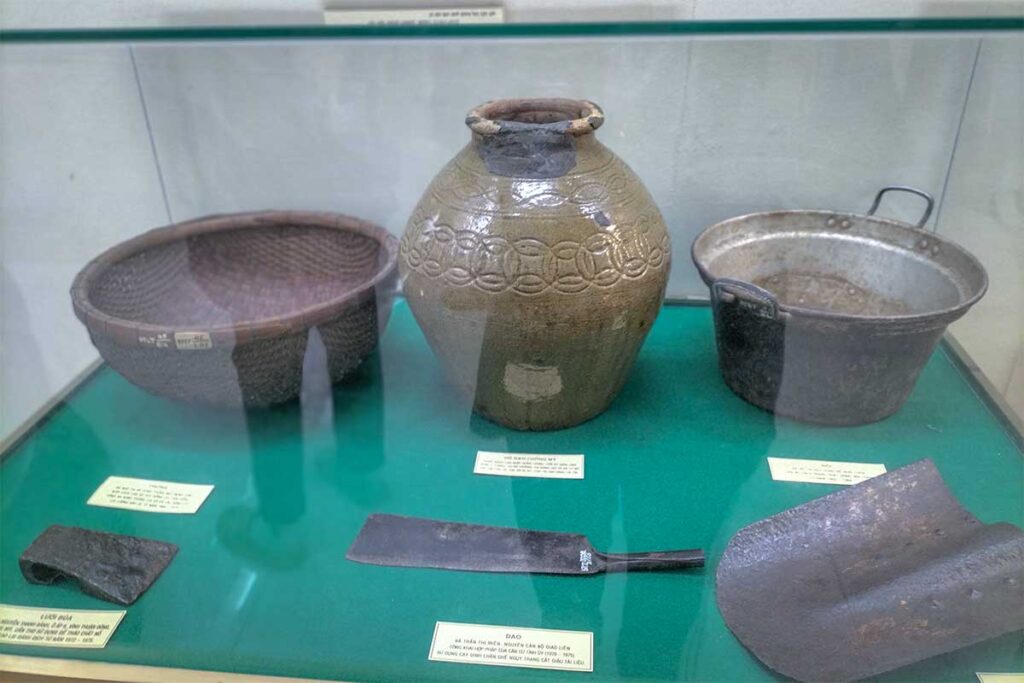
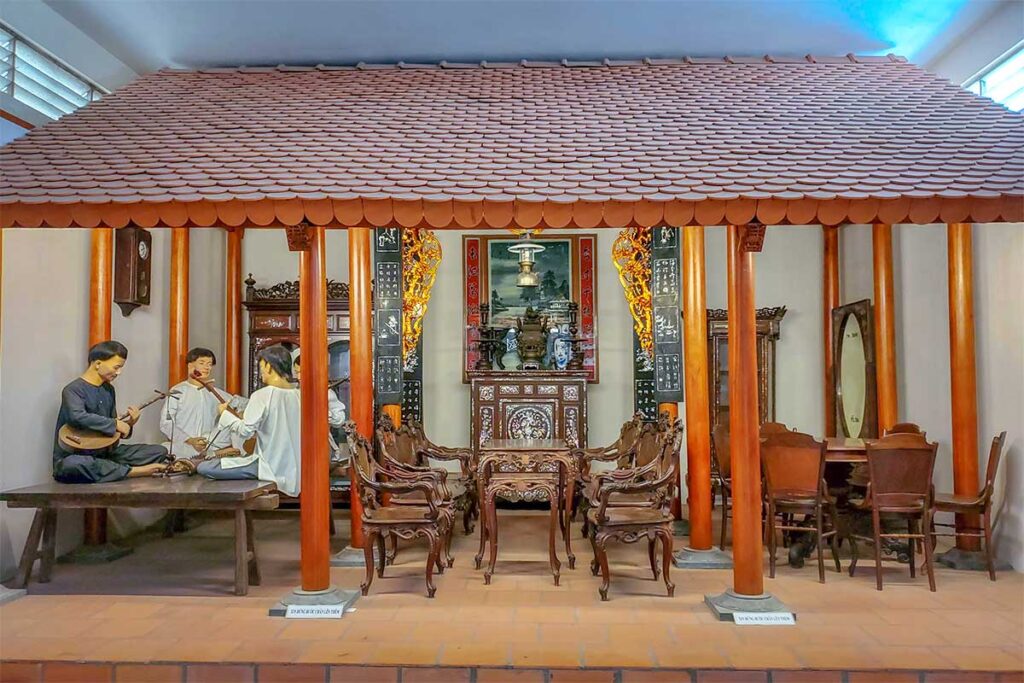
This part gives an overview of the region’s geography, rivers, and cultural background. You’ll see references to the Oc Eo culture, which flourished in southern Vietnam more than a thousand years ago, alongside displays on the Kinh (Vietnamese majority), Hoa (Chinese), and Khmer communities. Models of boats, farming tools, and daily life offer a glimpse into how people have lived in the delta for centuries.
4. Resistance & Struggle History
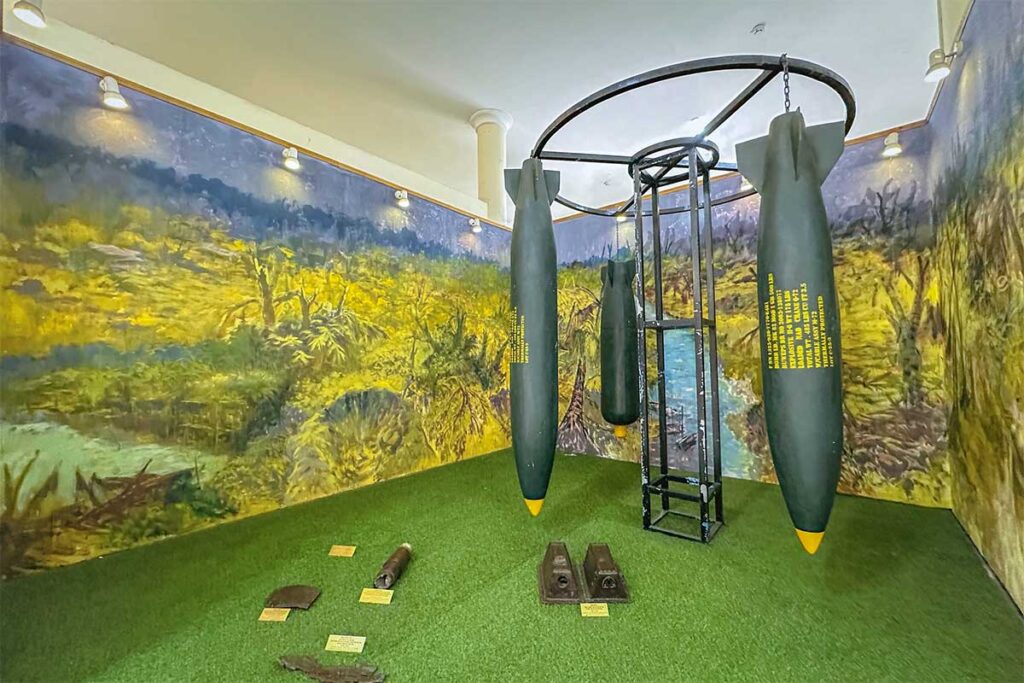
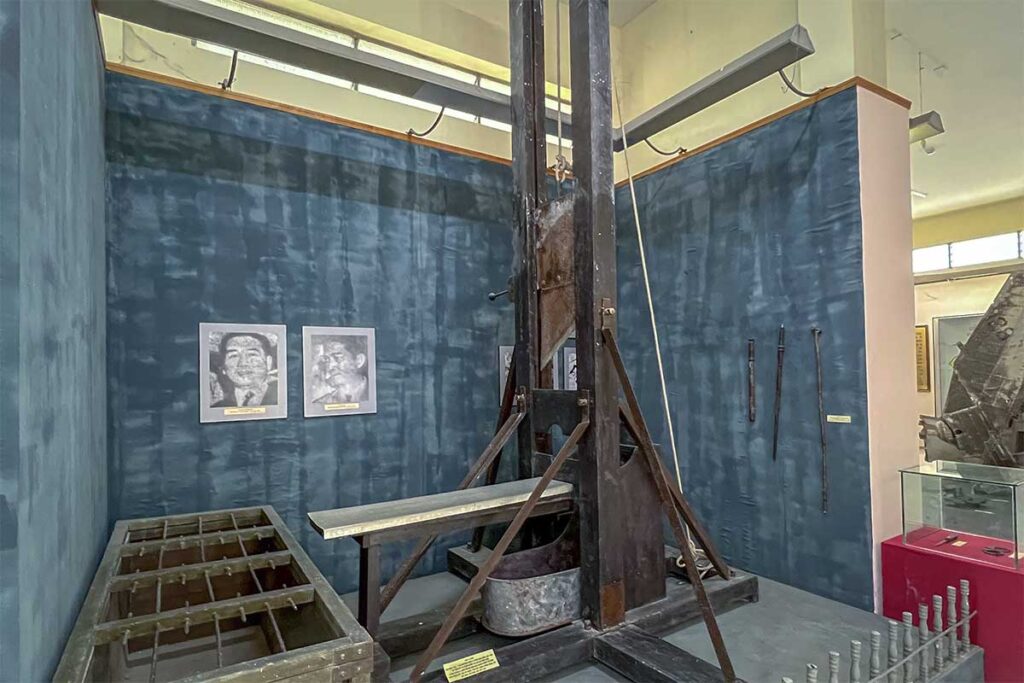
The second floor focuses heavily on war history, particularly the resistance against French and American forces. Exhibits include photographs, propaganda posters, and weapons, as well as a rather stark guillotine used during French colonial rule. It’s a sobering section that dominates much of the museum’s content, giving visitors an idea of how strongly the narrative of resistance shapes local history.
5. Socio-Economic Achievements
Another gallery highlights Can Tho’s development after 1975. Displays show the growth of agriculture (especially rice production), industry, and culture in the post-war years. It’s more statistical and display-board heavy, so less engaging than other sections, but it does give context to how the city transformed into today’s economic hub of the Mekong Delta.
6. Special Exhibitions & National Treasures
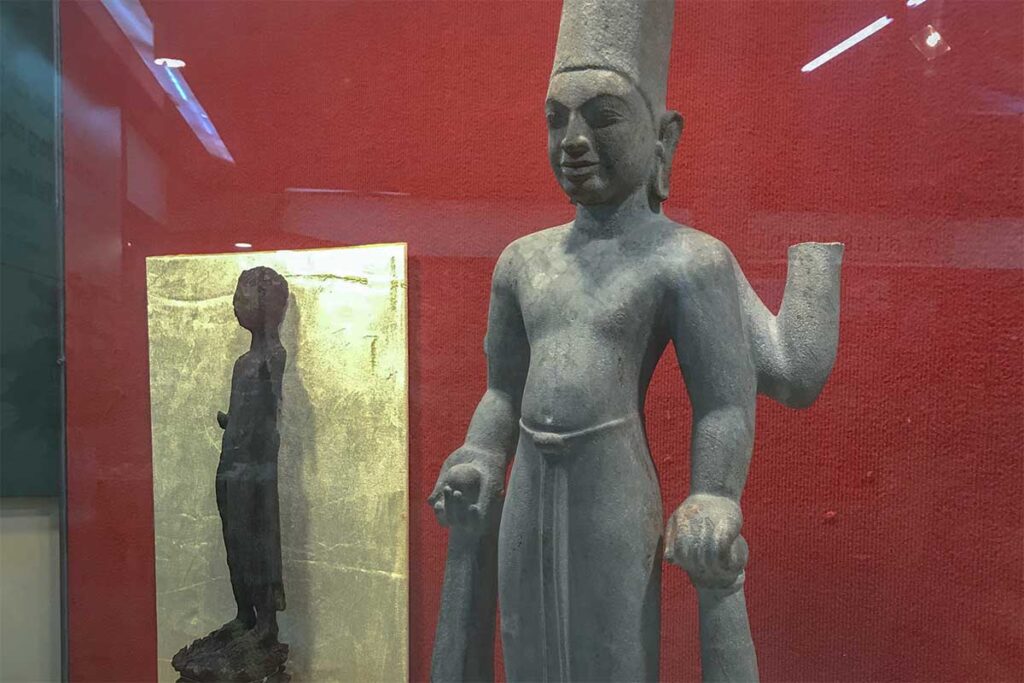
Can Tho Museum occasionally rotates thematic exhibitions, often tied to cultural anniversaries or local events. What stands out most here are the Oc Eo artifacts recognized as national treasures. These include the Nhon Thanh Buddha statue carved from wood, a Linga-Yoni fertility symbol, a finely crafted ceramic ritual vase, and a set of ancient jewellery moulds. These pieces, some dating back to the 1st–6th centuries, are arguably the most impressive part of the collection and give real archaeological weight to the museum.
What is nearby the museum to combine a visit
The museum alone may not justify a trip on its own, but its central location makes it easy to combine with other attractions. If you’re already in the area, you can easily turn your visit into a short walking tour of downtown Can Tho.
- Ninh Kieu Wharf – Just a few minutes away, this riverside promenade is one of the city’s main landmarks. You can take a stroll along the Hau River, catch a boat trip, or come back in the evening when the wharf fills with food stalls and music.
- Ong Pagoda – Around 600 meters from the museum, this colorful Chinese temple is packed with incense coils, intricate wood carvings, and lively shrines. It offers a strong contrast to the museum’s war-focused displays.
- Military Zone 9 Museum – Only about 300 meters away, this small military museum focuses on the resistance wars. Expect to see weapons, military vehicles, and photos. It overlaps a bit with Can Tho Museum but adds a more equipment-heavy perspective.
- Can Tho Central Market – A short walk away, this bustling market gives you a taste of everyday life in the city. Stalls sell everything from fresh produce and dried fish to clothes and household goods. It’s a good way to experience the lively, commercial side of Can Tho after a quiet museum visit.
Is Can Tho Museum worth visiting?
Can Tho Museum is not a must-see attraction. The exhibitions follow the typical style of provincial museums in Vietnam, with plenty of photos, text panels, and artifacts but little in the way of modern, interactive displays. For foreign visitors, the experience is limited further by the lack of English signage—without Google Translate, much of the content is difficult to follow.
That said, the museum does have a few strengths. It’s free, air-conditioned, and located right in the city center, which makes it easy to fit into a day of sightseeing. If you’re already visiting Ninh Kieu Wharf, Ong Pagoda, or the central market, it can be a worthwhile stop for an hour. But if you’re short on time in Can Tho, you won’t be missing a major highlight by skipping it.
